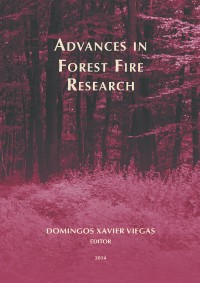Please use this identifier to cite or link to this item:
https://hdl.handle.net/10316.2/34227| DC Field | Value | Language |
|---|---|---|
| dc.contributor.author | Ganteaume, Anne | |
| dc.contributor.author | Jappiot, Marielle | |
| dc.date.accessioned | 2014-10-22T16:13:31Z | |
| dc.date.accessioned | 2020-09-09T21:31:03Z | - |
| dc.date.available | 2014-10-22T16:13:31Z | |
| dc.date.available | 2020-09-09T21:31:03Z | - |
| dc.date.issued | 2014 | - |
| dc.identifier.isbn | 978-989-26-0884-6 (PDF) | |
| dc.identifier.uri | https://hdl.handle.net/10316.2/34227 | - |
| dc.description.abstract | In order to assess the fire risk in Wildland-Urban Interfaces (WUIs) of SE France according to the environment of the housing, several descriptive parameters (ornamental species, types of vegetation adjoining the environment of the housing, types of fence, structure of the hedges and implementation of the regulation on brush-clearing) assumed to either increase or decrease the fire propagation, thus the fire risk, were surveyed according to the types of WUI (isolated, scattered, dense and very dense clustered), in two different locations (coastal and inland) of the study area (département Bouches du Rhône). The flammability of the most frequent ornamental species was assessed at the levels of live and dead surface fuels. Results showed that the two areas differed according to the main WUI type, the main ornamental species, the main type of fence, the main type of vegetation adjoining the environment of the housing. There was also a variation of these parameters between the different types of WUI, especially according to the ornamental species. The fire risk, assessed through the parameters surveyed and through the flammability of the main ornamental species, increased from the very dense and dense clustered WUIs to the isolated and scattered WUIs and from the coastal area to the inland area. The improvement of the knowledge on WUI environment at the small scale will allow an increase in the efficiency of the wildfire prevention targeting the areas most at risk. | eng |
| dc.language.iso | eng | - |
| dc.publisher | Imprensa da Universidade de Coimbra | por |
| dc.relation.ispartof | http://hdl.handle.net/10316.2/34013 | por |
| dc.rights | open access | - |
| dc.subject | Wildland-Urban Interfaces | eng |
| dc.subject | wildland fire | eng |
| dc.subject | fire risk | eng |
| dc.subject | flammability of ornamental vegetation | eng |
| dc.title | Assessing the fire risk in the wildland-urban interfaces of SE France: focus on the environment of the housing | por |
| dc.type | bookPart | por |
| uc.publication.firstPage | 648 | - |
| uc.publication.lastPage | 656 | - |
| uc.publication.location | Coimbra | por |
| dc.identifier.doi | 10.14195/978-989-26-0884-6_73 | - |
| uc.publication.section | Chapter 3 - Fire Management | por |
| uc.publication.digCollection | PB | por |
| uc.publication.orderno | 73 | - |
| uc.publication.area | Ciências da Engenharia e Tecnologias | por |
| uc.publication.bookTitle | Advances in forest fire research | - |
| uc.publication.manifest | https://dl.uc.pt/json/iiif/10316.2/34227/211223/manifest?manifest=/json/iiif/10316.2/34227/211223/manifest | - |
| uc.publication.thumbnail | https://dl.uc.pt/retrieve/11171407 | - |
| uc.publication.parentItemId | 53868 | - |
| uc.itemId | 70245 | - |
| item.grantfulltext | open | - |
| item.fulltext | With Fulltext | - |
| Appears in Collections: | Advances in forest fire research | |
Files in This Item:
| File | Description | Size | Format | |
|---|---|---|---|---|
| 978-989-26-0884-6_73.pdf | 1.66 MB | Adobe PDF |  |
Items in DSpace are protected by copyright, with all rights reserved, unless otherwise indicated.
